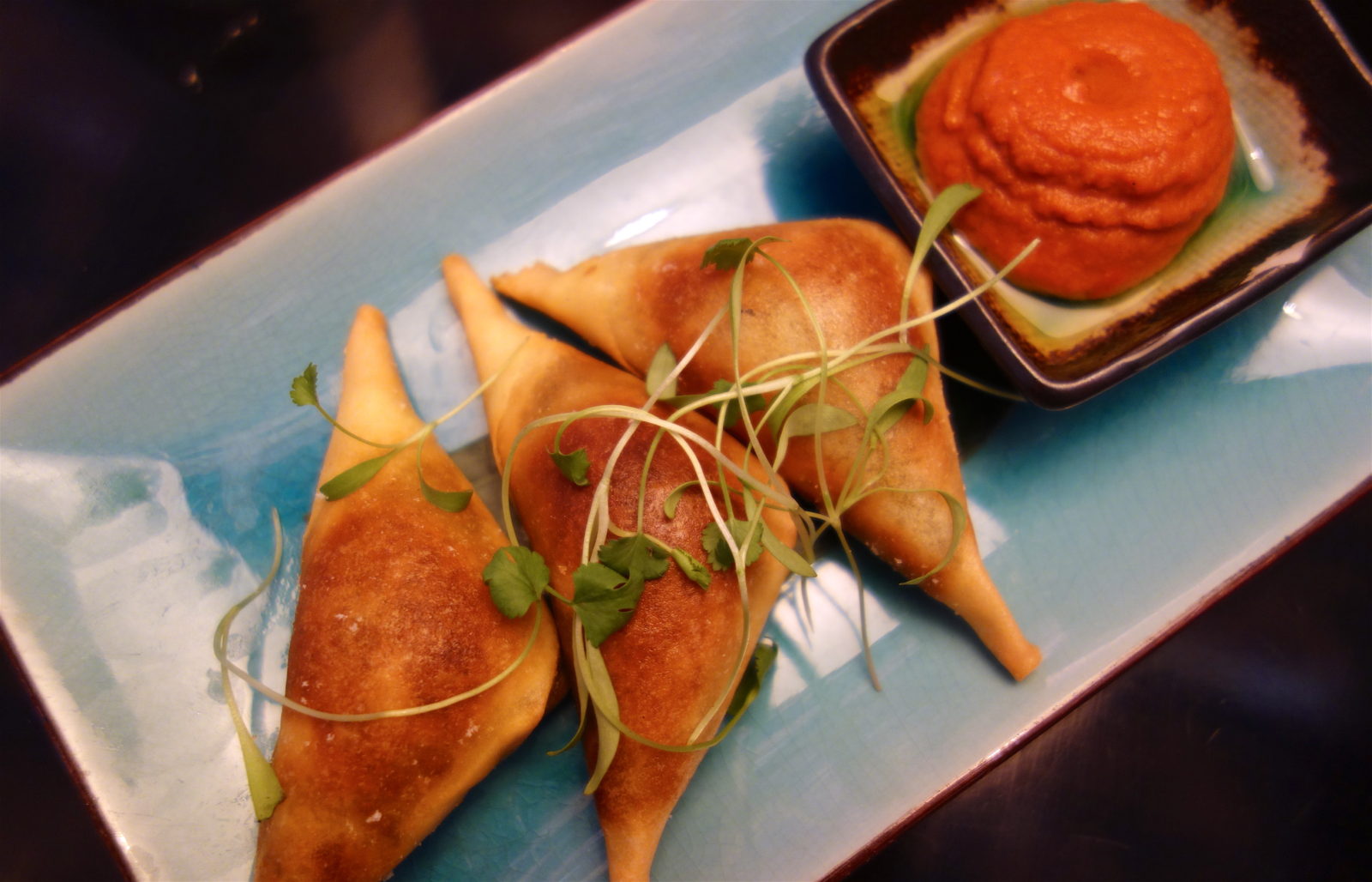The Local newsletter is your free, daily guide to life in Colorado. For locals, by locals.
Many of us associate pastry with France by default, which is fair enough—the French have arguably advanced the art of pâtisserie about as far as it can go. But they didn’t invent it. The Oxford Companion to Food makes a case for crediting the Egyptians; this NPR story suggests that pastry’s history in North Africa and the Middle East stretches back centuries if not millennia; and I located several references indicating that the same is true in Asia (particularly in China, with its mooncakes and so on).
The point being that Europe doesn’t corner the market on pastries. Take two of my personal favorites—both of which hail from Asia—as examples: “char siu sou” and the samosa. Both are savory, stuffed, and typically triangular, but beyond that, each has its own story to tell.


Like “char siu bao,” the cute, pillowy steamed or baked pork buns that have recently begun to enter the American mainstream, “char siu sou” is a staple snack of Cantonese “yum cha,” defined explicitly as a tea-drinking occasion but implicitly as a dim sum-eating occasion. Like “char siu bao,” “char siu sou” is filled with, well, “char siu,” or chopped, “barbecued” pork. Although the meat is actually roasted, the thick, tangy-sweet mix of hoisin, soy, and oyster sauces it’s tossed with bears some resemblance to Kansas City–style barbecue sauce.
But unlike steamed buns, “char siu sou” starts with flaky, sesame seed–sprinkled puff pastry, not a smooth, springy dough. Meanwhile, unlike the butter-and-flour layers that comprise French puff pastry, the Chinese version generally alternates layers of two different types of dough: water dough and short dough (the difference being that the latter has a higher ratio of fat to flour). The result—whether folded into a triangle or rolled into a less-common cylinder—is flaky on the outside and wonderfully tender on the inside, yet surprisingly resistant to the saturation (and thus, sogginess) that might result from such a saucy filling. It’s sturdy, rib-sticking stuff.

As for samosas, the Indian version—crispy fried (or occasionally baked) dough pillows spilling with spiced potatoes, peas, minced lamb, and the like—may be the most familiar to Westerners. But that style is just the tip of a very large and vibrant iceberg. In fact, the samosa’s origins seem to be Middle Eastern, according to Clifford Wright in A Mediterranean Feast, who notes that “sanbusak” was first described in a text from ninth-century Iraq.
Sure enough, you’ll find the pastry by one spelling or another at many Middle Eastern restaurants in the metro area: fried “sambusek” stuffed with feta and eggs or spinach, walnut, and pomegranate at Ali Baba Grill; spinach-and-pine nut-filled “sabanek” at Phoenician Kabob; and so on.
Beyond the Arab Levant, Oxford confirms that “the ‘patties’ of Sri Lanka and ‘curry puffs’ of Malaysia also derive from samosa.” You can try the Southeast Asian rendition at Makan Malaysian Cafe, stuffed with potatoes and chicken or tofu. The beloved street snack has a strong foothold in Africa too: African Grill & Bar makes superb samosas with beef or lamb as well as chicken or vegetables. Heck, says Wright, there’s even “reason to believe that [“sanbusak”] is the progenitor of the empanada and the calzone.” The croissant’s got nothing on that.
Try It: During your next dim sum outing, look for “char siu sou” by the name of “BBQ pork puffs” or “roast pork puffs.” Star Kitchen (2917 W. Mississippi Ave., 303-936-0089) makes a textbook version, though I have a soft spot for the baton-shaped offerings at The Empress Seafood Restaurant (2825 W. Alameda Ave., 303-922-9822).
I can also vouch for all of the aforementioned samosa specialists, but the list hardly ends there. Two newer options include Departure Restaurant & Lounge—where Gregory Gourdet (249 Columbine St., 720-772-5020) stuffs his with the Indonesian beef curry known as “rendang”—and Himchuli (3489 W. 32nd Ave., 303-728-9957), which makes a fine samosa chat, smothering the pastries in yogurt, tamarind and mint chutneys, and sprinkling them with chickpeas and red onion.








